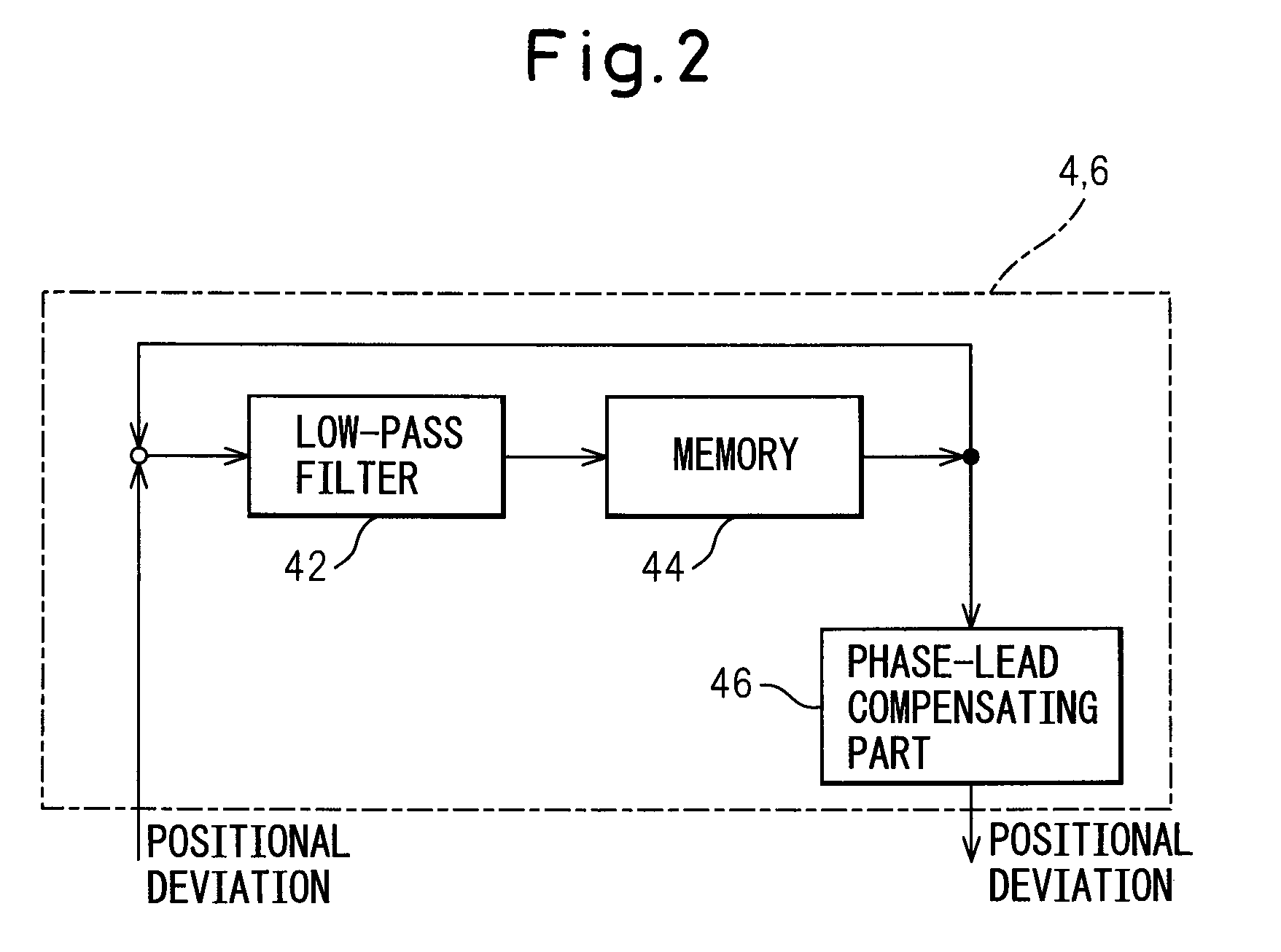Control device with learning function for electric motors
a technology of electric motors and control devices, applied in the direction of program control, dynamo-electric converter control, instruments, etc., can solve the problems of difficult to precisely move the workpiece, the workpiece may be bent or twisted, and the inability to realize the precise rotational control of the workpi
- Summary
- Abstract
- Description
- Claims
- Application Information
AI Technical Summary
Benefits of technology
Problems solved by technology
Method used
Image
Examples
Embodiment Construction
[0025]FIG. 1 is a block diagram of a control device 2 according to a first embodiment of the invention. Control device 2 is used for rotating a crankpin 8 by means of first and second electric motors 10 and 12. Control device 2 periodically outputs a command for controlling the electric motors.
[0026]In relation to first electric motor 10, when a position command (or a movement command) output from a numeric control device (not shown) is input to control device 2, a first position gain 14 outputs a speed command. Next, a first speed control part 16 outputs a torque command based on the speed command, a first current control part 18 outputs a voltage command based on the current command, and then a first amplifier 20 rotatably activates first electric motor 10. A first position detector 22 is attached to first electric motor 10 and a detected value from first position detector 22 is used for position feedback. Speed feedback and current feedback are also used for controlling the speed...
PUM
 Login to View More
Login to View More Abstract
Description
Claims
Application Information
 Login to View More
Login to View More - R&D
- Intellectual Property
- Life Sciences
- Materials
- Tech Scout
- Unparalleled Data Quality
- Higher Quality Content
- 60% Fewer Hallucinations
Browse by: Latest US Patents, China's latest patents, Technical Efficacy Thesaurus, Application Domain, Technology Topic, Popular Technical Reports.
© 2025 PatSnap. All rights reserved.Legal|Privacy policy|Modern Slavery Act Transparency Statement|Sitemap|About US| Contact US: help@patsnap.com



